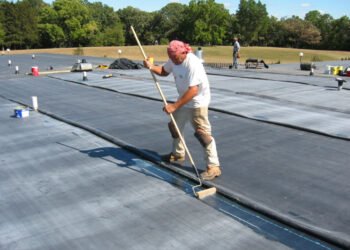Worried that your basement might flood? If you don’t take proactive steps, it might. With extreme weather, flooding is a common occurrence. Many basements experience it, sometimes leading to costly repairs.
Basement flooding is often one of the biggest and most damaging fears homeowners could have. But, it doesn’t need to be something you worry about. By taking steps to prevent a flooded basement, you can save yourself a lot of stress down the line.
Knowing how to prevent it isn’t straightforward, though. That’s why we’re here to help.
In this article, we’ll talk about some potential flooding prevention measures that, helping you to have a dry basement for years to come. Read on!
1. Taking Actions Before a Rainfall
Taking action before rainfall is a key way to prevent a flooded basement. Regularly check the gutters, drains, and downspouts around the home. Ensure that they are clear of debris like leaves and twigs which can block the rainwater from flowing away.
Also, check if there are no tree roots near the home. This diverts runoff water toward your basement. Inspect the lawn for any dips or depressions which may direct water toward the basement.
Once the exterior is secure, inspect and clean the sewage drainage system within the basement. In areas with high water tables, installing a sump pump may be beneficial.
Sealing cracks and gaps in the basement walls will help to prevent, or at least cut the ingress from any water from outside. All these measures taken in advance will greatly reduce the risk of a flooded basement.
2. Install a Sump Pump
Installing a sump pump is one of the best ways to prevent a flooded basement. A sump pump works by collecting water in a pit or basin, then using an automatic switch.
The pump will turn on when the water rises to a certain level and pump the water away from your home. It is connected to a drainage pipe that carries the water away to another location, such as a ditch or pond.
This ensures that your basement gets rid of the water before it has a chance to cause damage and flooding. Also, make sure that your downspouts are working and that they are routed away from home. You should inspect your basement during heavy rains, to make sure that your sump pump is working properly.
3. Upgrade Your Home’s Plumbing System
To prevent a flooded home, one of the best things you can do is upgrade your home’s plumbing system. Installing a backflow prevention system and/or a check valve prevents sewer water from backing up into your basement.
Ensuring that downspouts and foundations are properly directed away from home can help reduce the risk of flooding. Inspecting and replacing aging underground pipes is also recommended. Finally, it is important to keep your windows and doors shut, as they provide an entryway for flooding.
4. Identify Your Basement’s Primary Sources of Potential Flooding
A gap between your wall and floor refers to a space or opening that exists between the bottom of a basement wall and the floor. This gap may be visible as a crack or separation between the wall and floor, or it may be hidden and only noticeable through other signs such as moisture or water seepage.
It is important to know the primary sources of potential flooding so that steps can be taken to prevent it. While the weather can be a major contributing factor, other sources such as broken pipes, leaking appliances, and clogged drains.
To address these problems, residents should inspect their sump pumps. Check for cracks in the foundation and basement walls, and address any persistent water seepage. Patch up any holes or gaps in the siding to make sure the area stays dry and dealing with any water pressure issues is a good protective measure.
5. Implement a Flood Prevention System
Preventing a flood starts by implementing a flood prevention system. To begin, check the walls and floors of the basement for any cracks and seal them with a waterproof sealant.
Make sure the drainage system in and around the home is clear and functioning. Install backwater valves in the home to ensure water cannot come back up into the house. Install check valves and battery-powered pumps to help with the flow of water away from home.
6. Maintenance and Mitigation Strategies for the Long-Term
One of the most effective long-term mitigation and maintenance strategies for preventing a flooded basement is to keep gutters and downspouts in good working order.
Gutters and downspouts should be checked and cleaned twice per year to prevent debris from clogging them. You can use concrete blocks and fill dirt to create an adequate slope.
In some cases, it may be necessary to have waterproofed basement walls and floors. This can be accomplished by applying a sealant and/or installing a waterproofing membrane.
Check this basement waterproofing guide to learn more about proper maintenance and mitigation that will ensure that you are not stuck in a flooded basement in the future.
7. Choosing the Right Dehumidifier for Basement Drying
To prevent a flooded basement, it is important to choose the right dehumidifier. A basement dehumidifier should be able to remove moisture and reduce the amount of humidity in the air to an acceptable level. It should fit the space, and it should have an alarm to alert the homeowner if levels are too high or too low.
If you have a dehumidifier, make sure it’s the right model for the size and humidity of your basement, and that it’s in good working order. When used in combination with these steps, a dehumidifier can provide effective basement drying.
Prevent a Flooded Basement With These Tips
Properly maintaining your home is the best way to prevent a flooded basement. If your basement has been prone to flooding in the past, be sure to check for water damage, insulate pipes, use a sump pump, and fix drainage issues.
Taking the appropriate steps now can ensure a dry and safe basement for years to come! So, don’t wait – take action to prevent a flooded basement right away!
If you found any of these tips helpful, check out the rest of our site for more articles like this.












